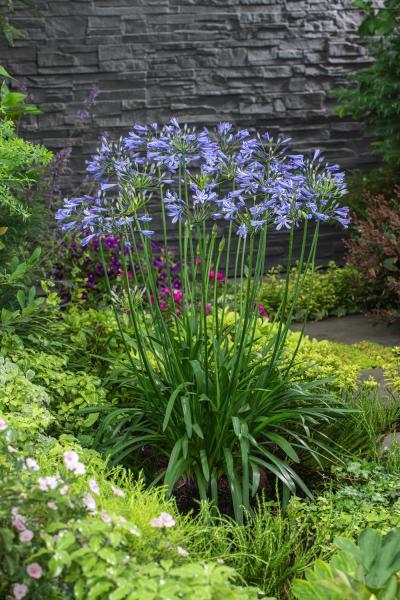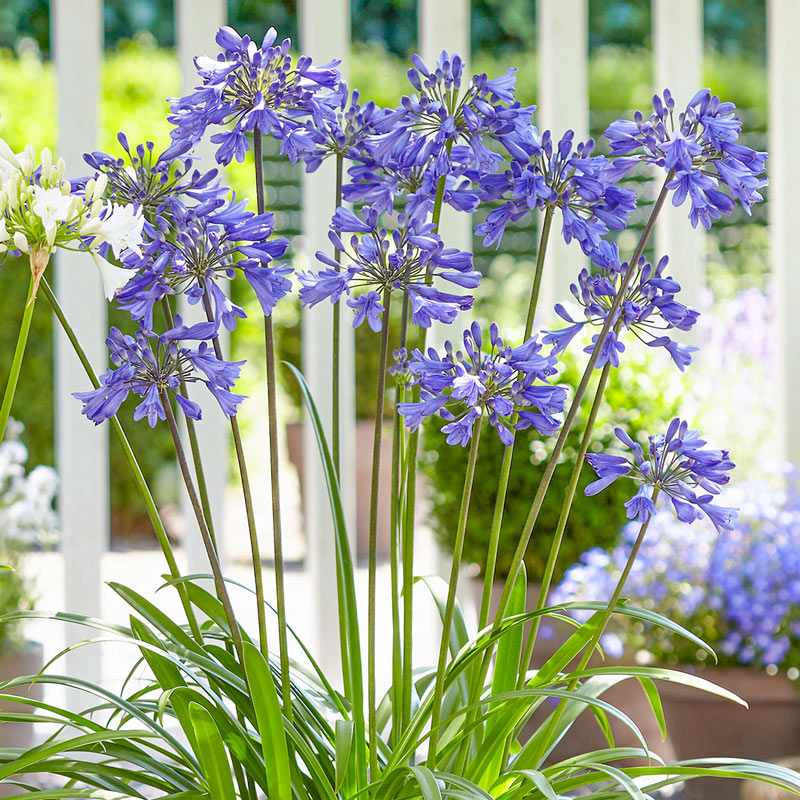Releasing the Secret to Effective Agapanthus Cultivation: Tips and Tricks for a Flourishing Garden
In the realm of horticulture, cultivating agapanthus effectively requires a calculated strategy that incorporates numerous aspects of plant care. With cautious attention to information, one can open the tricks to supporting these sensational blossoms, resulting in a yard that flourishes with beauty and vibrancy. By understanding the subtleties of agapanthus farming, one can create a setting where these plants prosper and bloom generously. In the complying with discussion, we will certainly discover vital ideas and tricks that will lead you in the direction of a flourishing agapanthus yard, providing understandings right into finest methods, soil conditions, watering methods, and a lot more.
Planting Agapanthus: Finest Practices
When growing Agapanthus, appropriate soil preparation is vital for making sure effective growth and advancement of these attractive flowers. Agapanthus, commonly understood as Lily of the Nile or African lily, flourishes in well-draining dirt with a somewhat acidic to neutral pH degree - Agapanthus. Prior to planting, it is important to change hefty clay soils with natural matter such as garden compost or peat moss to enhance drain and give important nutrients for the plants
To grow Agapanthus, select a location that gets complete sunlight to partial shade, as this will promote healthy and balanced development and plentiful blooming. Dig a hole two times the diameter of the plant's origin ball and put the Agapanthus at the same depth it was previously expanding. Gently backfill the hole with dirt, weighing down securely to get rid of any air pockets around the roots.
Water the recently grown Agapanthus thoroughly and remain to keep the dirt uniformly moist, particularly during the plant's energetic expanding season. Agapanthus. Applying a well balanced plant food once a month can better support the plant's development and blooming. By following these finest methods for growing Agapanthus, you can produce a stunning display screen of these exciting flowers in your yard
Suitable Dirt Issues for Agapanthus
For optimal development and growing success of Agapanthus plants, ensuring the soil problems are optimal is important. Agapanthus prospers in well-draining dirt with a slightly acidic to neutral pH degree varying from 6.0 to 7.0. This type of dirt permits adequate water drain, avoiding waterlogging which can bring about root rot. To enhance dirt water drainage, think about adding raw material such as garden compost or peat moss when preparing the growing website. Furthermore, Agapanthus likes soil that is abundant in nutrients, so incorporating a balanced plant food during the expanding season can advertise healthy growth and lively blooms.

Watering and Fertilizing Tips
To guarantee healthy development and lively blossoms, correct watering and feeding strategies are vital for effective Agapanthus cultivation. Agapanthus plants profit from regular watering, particularly throughout the expanding season.
When it involves feeding Agapanthus, a well balanced fertilizer with equivalent parts nitrogen, phosphorus, and potassium can be applied in the spring to promote healthy growth and blooming. Slow-release plant foods are excellent for offering nutrients gradually over an extended period. Stay clear of over-fertilizing, as this can result in excessive vegetation development at the cost of blooms.
Additionally, incorporating raw material like garden compost right into the dirt can enhance nutrient degrees and enhance dirt structure, helping in the overall wellness of the Agapanthus plants. By adhering to these watering and fertilizing pointers, garden enthusiasts can ensure their Agapanthus plants flourish and create stunning display screens of flowers.
Trimming and Deadheading Techniques
Proper pruning and deadheading techniques play a crucial duty in preserving the health and wellness and visual appeals of Agapanthus plants, matching the important techniques of watering and fertilizing for successful cultivation. Trimming Agapanthus involves eliminating invested blossom heads, yellowing or dead fallen leaves, and overall shaping of the plant to advertise better development. Deadheading, the procedure of eliminating faded blossoms, not just improves the plant's appearance but likewise motivates further blooming.
When deadheading Agapanthus, it is recommended to snip off the blossom stem at the base using sharp, tidy shears. This procedure reroutes the plant's energy from seed manufacturing back right into root and vegetation growth, promoting a much healthier and more durable plant. Routine deadheading can prolong the flowering duration of Agapanthus and prevent self-seeding, my blog which can bring about congestion.
In regards to trimming, Agapanthus usually take advantage of a light trim after flowering to clean the plant and encourage fresh development. Cutting down the invested flower stems and getting rid of any damaged or dead foliage aids preserve the plant's vitality and total appearance. However, it is essential to stay clear of reducing into the crown of the plant, as this can deteriorate its health.

Protecting Agapanthus From Vermins and Diseases
Carrying out efficient bug and condition management methods is crucial to protecting the health and wellness and vigor of Agapanthus plants in growing. One usual bug that influences Agapanthus is the Agapanthus borer, a caterpillar that passages right into the plant, triggering damages to the blossoms and leaves.
Along with parasites, Agapanthus are susceptible to conditions such as origin rot and fungal leaf places. These issues can often be avoided by guaranteeing proper drainage and preventing overwatering. Impacted parts of the plant ought to be quickly gotten rid of to avoid further spread if indicators of illness appear. Fungicides may likewise be made use of as a therapy step, complying with the maker's instructions thoroughly. By staying attentive and attending to pest and condition problems immediately, gardeners can help their Agapanthus prosper and prosper.

Verdict
To conclude, successful cultivation of agapanthus calls for appropriate growing strategies, ideal soil problems, sufficient watering and fertilizing, normal trimming and deadheading, and security from diseases and bugs. By adhering to these suggestions and methods, gardeners can ensure a prospering garden filled click resources with lovely agapanthus blooms. Agapanthus. Bear in mind to maintain regular care and interest to detail to promote the health and long life of these magnificent plants
When planting Agapanthus, proper dirt prep work is essential for guaranteeing effective growth and advancement of these beautiful flowers.Water next the recently planted Agapanthus completely and continue to maintain the soil uniformly wet, particularly during the plant's energetic expanding season.For ideal development and growing success of Agapanthus plants, guaranteeing the dirt problems are perfect is critical. When growing or transplanting Agapanthus, ensure the soil is well-prepared to supply the required foundation for the plants to establish themselves effectively. One usual bug that affects Agapanthus is the Agapanthus borer, a caterpillar that passages right into the plant, triggering damages to the leaves and blossoms.